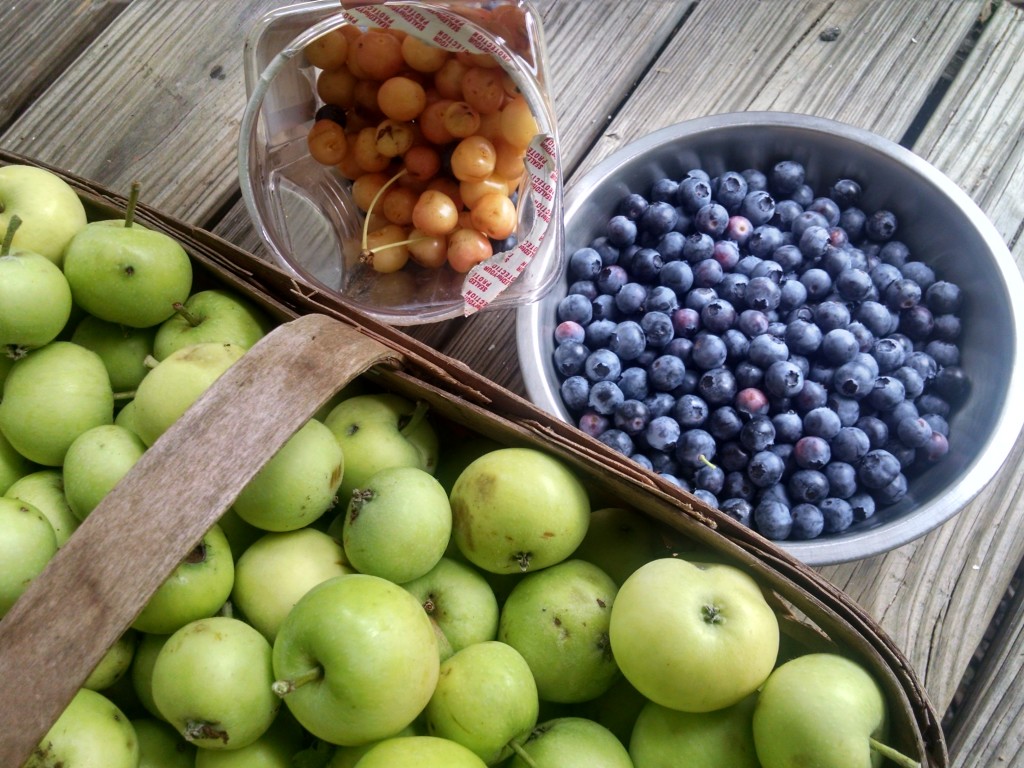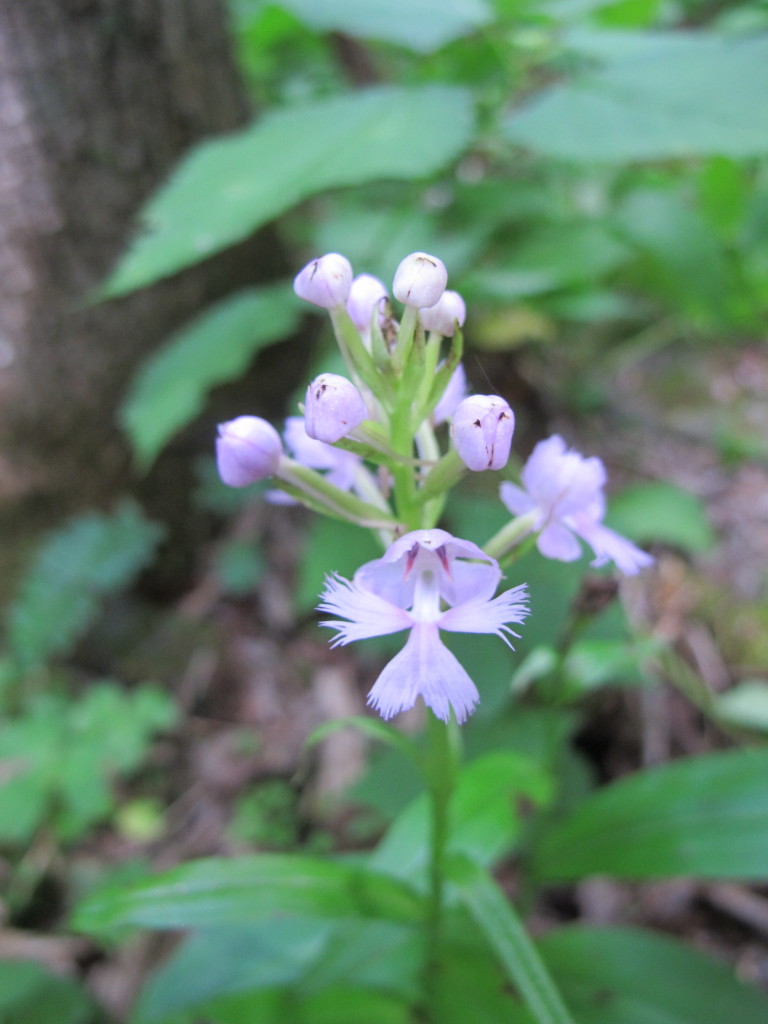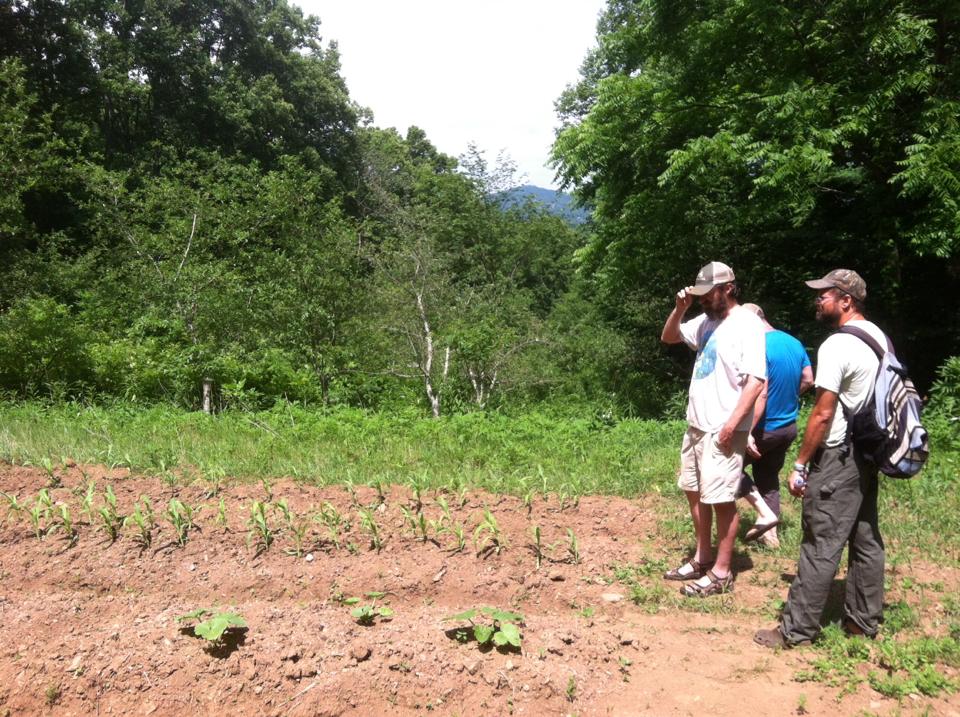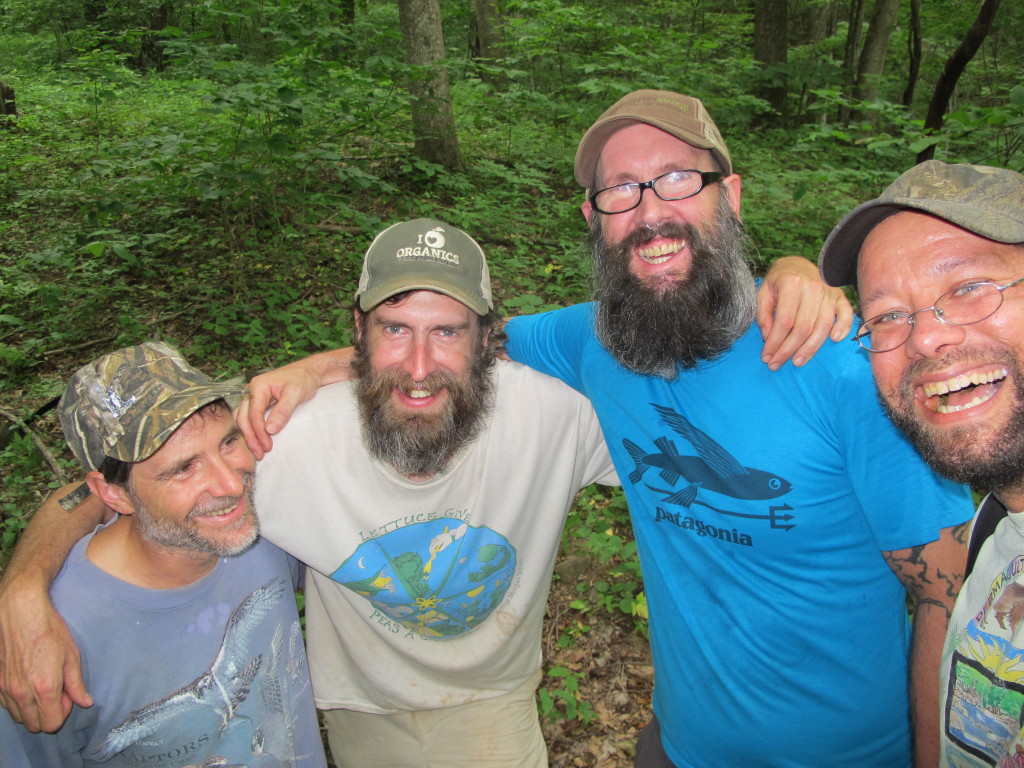Written by PHI Executive Director Marc Williams
It is always a pleasure to visit the Appalachian Institute for Mountain Studies. This non-profit headed up by Dr. Jim Veteto is dedicated to preserving the agrobiodiversity of Appalachia and educating the public on various other topics as well.
The orchard on the property features close to 100 varieties of mostly heirloom apples as well as yellow and black heart cherries, blueberries, persimmons and all manner of other fruit. We even harvested apples in June from a variety appropriately called Early Harvest. For those interested Jim also published an article a couple years ago about his research with orchardist perceptions around the effects of climate change (Veteto & Carlson, 2014).

We have been working on a plant inventory for the land over the last few years. The current total of native, naturalized and perennial plants crested over 300 species after our recent endeavors. Some new ones added to the inventory include Velvet grass (Holcus lanatus), Poke leafed Milkweed (Asclepias exalta), Small purple fringed orchid (Platanthera psycodes) and Whorled Loosestrife (Lysimachia quadrifolia).

On this particular occasion we also had the company of fantastic friend and naturalist Mycol Stevens of Finca Mycol fame down near Gainesville, FL. i challenged Mycol to add five new things to the list before he left as he is especially proficient in understudied groups like the grasses and sedges.
Shane Maxon was also present. He is working now at AIMS to help with everything from social media and other outreach to the local community in various ways and also work around the farm. He, Jim and others recently put in the heirloom seed crops for the summer including candy roaster squash, red white and blue corn and a number of different types of beans. Jim has hundreds of varieties of seeds from Appalachia representing these few groups alone thanks to his Master’s and Doctorate work concerning agrobiodiversity (James Robert Veteto, 2005, 2010).

After we spent a few hours around AIMS we took off to visit the legendary land of Joe Hollis called Mountain Gardens. There we met up with friend and fellow naturalist Abby Artemisia. It is always a little overwhelming to try to take in the incredible diversity at Joe’s. This is especially the case due to the presence of so many species from Asia which sometimes look remarkably similar to their Appalachian cousins and at other times look very alien and different than anything that grows in America. i had to take off from Joe’s but some of the other folks went on to start a brew from the fruit we picked at AIMS.
At the end of the day a good time was had by all and we will be looking forward to more great adventures in the Celo community of North Carolina down the line…

Literature Cited
Veteto, J. R. (2005). The History and Survival of Traditional Heirloom Vegetable Varieties and Strategies for the Conservation of Crop Biodiversity in the Southern Appalachian Mountains of Western North Carolina: A Thesis. Appalachian State University.
Veteto, J. R. (2010, May). Seeds of persistence [Dissertation]. Retrieved December 18, 2012, from http://ugakr-maint.libs.uga.edu/handle/123456789/8101?show=full
Veteto, J. R., & Carlson, S. B. (2014). Climate Change and Apple Diversity: Local Perceptions from Appalachian North Carolina. Journal of Ethnobiology, 34(3), 359–382. http://doi.org/10.2993/0278-0771-34.3.359